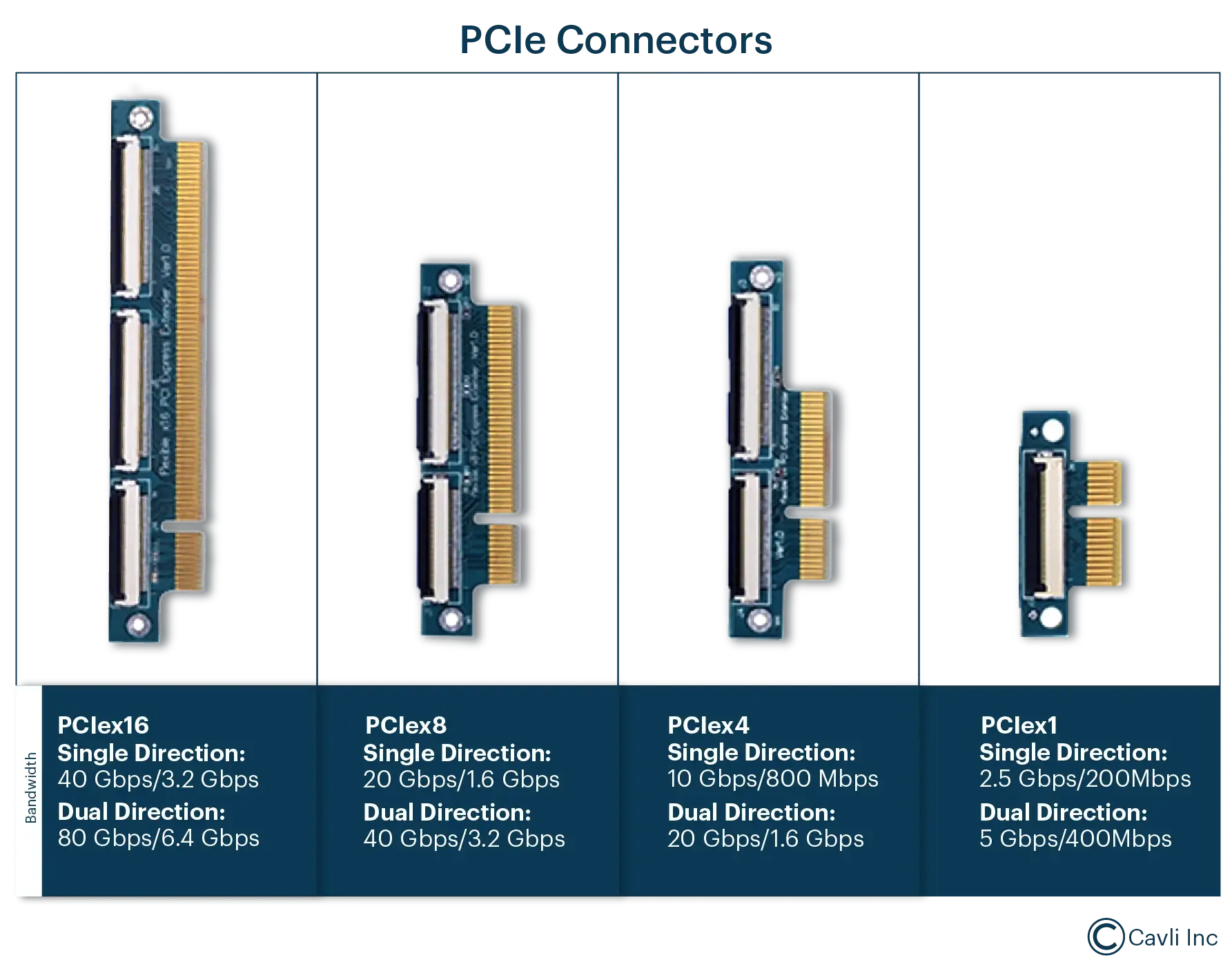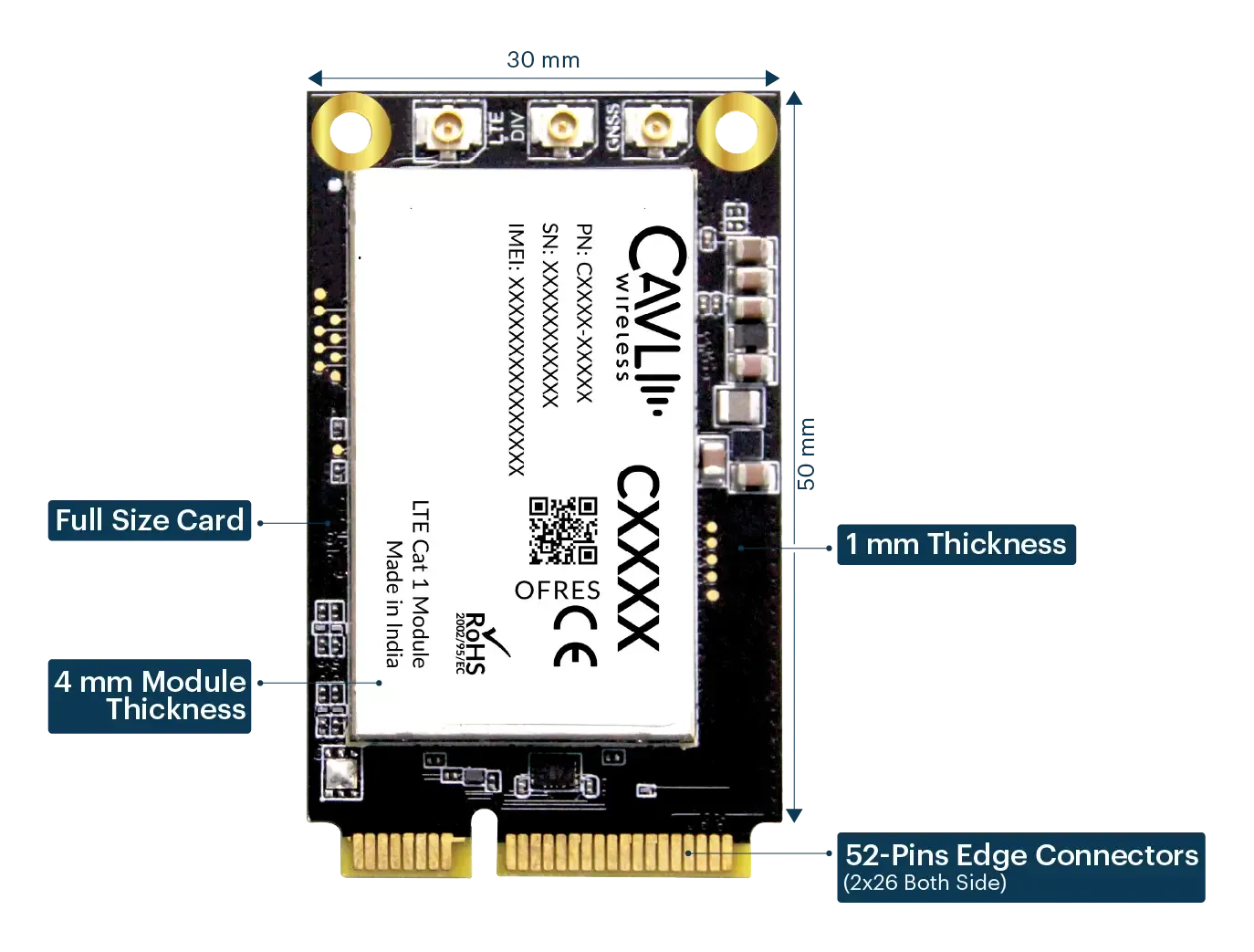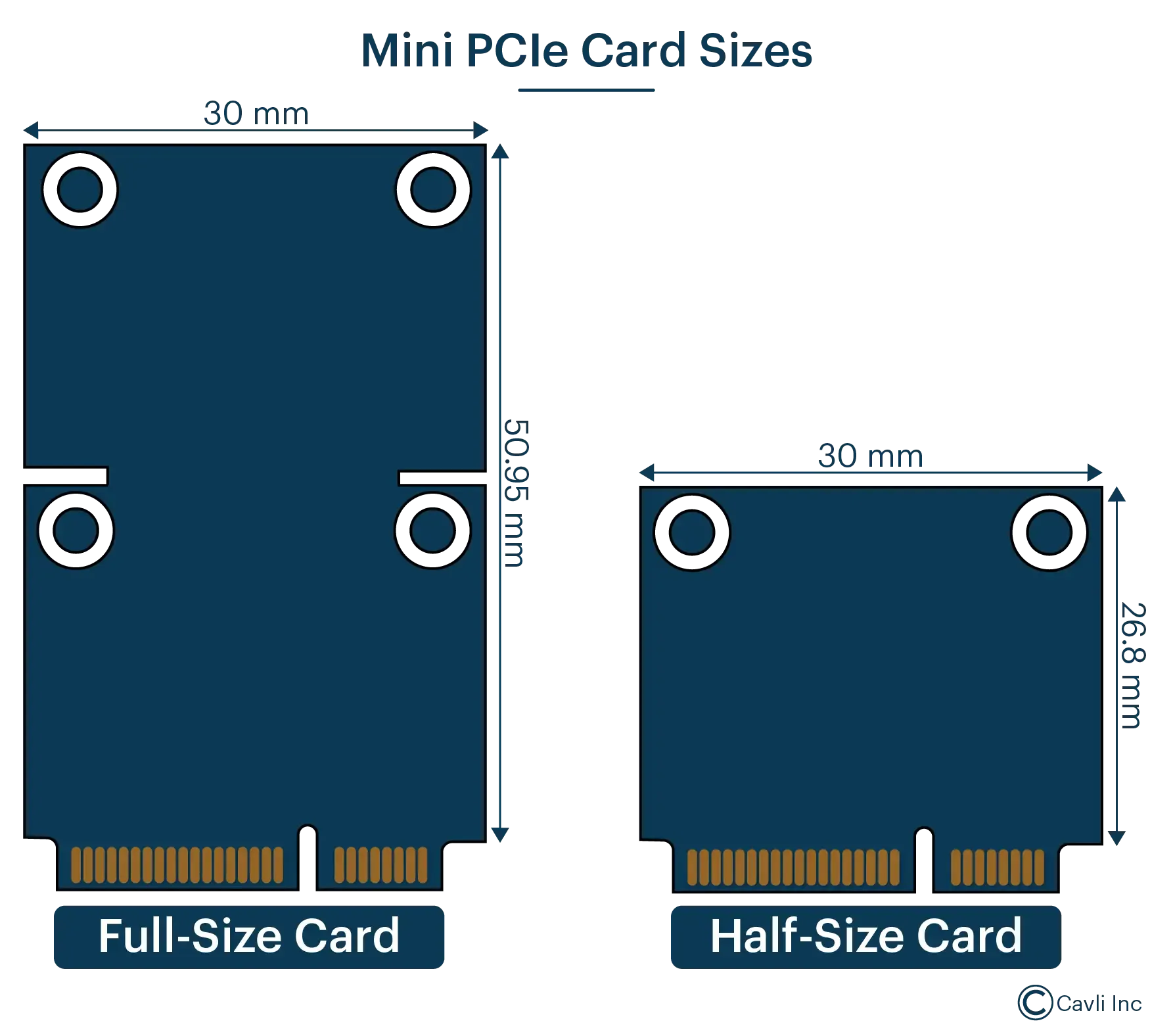James, Jr. Network Engineer
Hey, I'm working on a new IoT gateway design, and I'm confused about the PCI interface. We have legacy Mini PCI cards in our current system, but I keep hearing about Mini PCIe being better. Can you explain the relationship between Mini PCI and Mini PCIe?
Adam, Sr. Network Engineer
Great question, James! Think of it as an evolutionary chain. The PCI interface is a parallel bus architecture with shared bandwidth, similar to a single highway where all traffic has to merge and share lanes. The Mini PCI form factor incorporated parallel bus architecture, while the Mini PCIe form factor adopted the PCIe architecture with dedicated lanes or better signal quality.
James, Jr. Network Engineer
That makes sense from a performance perspective, but what about the practical differences? I noticed our current Mini PCI wireless cards seem to work fine. When would the extra bandwidth of the PCIe protocol matter in real-world applications?
Adam, Sr. Network Engineer
For basic 802.11n Wi-Fi or simple GPS modules, Mini PCI is often sufficient. Whereas Mini PCIe with PCIe architecture outshines in modern 4G/5G cellular modules, Non-Volatile Memory Express (NVMe) storage, and high-throughput applications such as video streaming or edge AI processing.
James, Jr. Network Engineer
But I'm curious about signal integrity in harsh environments. Industrial applications deal with significant electromagnetic interference (EMI). How does Mini PCIe architecture handle EMI compared to Mini PCI's parallel bus?
Adam, Sr. Network Engineer
The differential signaling in Mini PCIe provides excellent common-mode noise rejection, typically better than Mini PCI's single-ended signals. Each PCIe lane in Mini PCIe has a dedicated twisted pair with built-in error detection and correction, so EMI that would cause data corruption gets automatically handled. Additionally, the point-to-point topology eliminates the signal reflections and crosstalk produced in the case of Mini PCI.
Opening Notes
In the rapidly evolving landscape of embedded systems and IoT connectivity, the choice of interface technology is paramount for product performance and future scalability. Mini PCIe (Mini PCI Express) has emerged as the gold standard form factor for high-performance compact connectivity solutions, revolutionizing the embedded design approach in everything from industrial gateways to edge computing devices. While its predecessor, Mini PCI, served the industry well for over a decade, the transition to Mini PCIe represents more than just an evolutionary step—it’s a fundamental shift from parallel bus limitations to serial point-to-point excellence. As IoT applications demand higher bandwidth, better signal integrity, and enhanced reliability, understanding the nuances between these interface technologies becomes crucial for engineers designing the next generation of connected devices.
What is Peripheral Component Interconnect (PCI)?
Peripheral Component Interconnect (PCI) is a hardware bus standard developed in the early 1990s to connect peripheral devices to a computer’s motherboard. It is a parallel communication interface that connects expansion cards such as network cards, sound cards, and graphics cards to communicate with the CPU and system memory. PCI supports plug-and-play installation to facilitate the addition and removal of devices without requiring manual configuration. It has a shared parallel bus architecture with multiple slots, enabling several devices to operate on the same communication pathway. Though this shared architecture introduced bandwidth sharing and latency issues in high-demand scenarios, it has formed the backbone of internal peripheral connectivity.
Origin of the PCI Mini Card
The origin of Mini PCI traces back to the late 1990s when the need arose for a smaller, more compact version of the standard PCI bus. Traditional PCI cards were too large and power-hungry for portable computers, which required alternate solutions that could fit into limited internal spaces without compromising performance.
Introduced by the PCI Special Interest Group (PCI-SIG) in 1999, Mini PCI maintained the core electrical and protocol characteristics of the original PCI standard but in a much smaller form factor. Mini PCI has a parallel bus connection fluential signal strength over distance. Mini PCI cards played a crucial role in the widespread adoption of wireless connectivity in laptops during the early 2000s.
By creating a standardized, compact interface, Mini PCI enabled the industry to offer versatile and reliable internal expansion options, helping bridge the gap between desktop-level functionality and portable convenience. It laid the groundwork for even more compact and faster interfaces, such as Mini PCI Express, which emerged later to accommodate evolving technology demands.
What is PCIe?
PCIe stands for PCI Express. It is a high-speed serial computer expansion bus standard designed to replace older parallel bus standards such as PCI. Introduced in 2003 by the PCI Special Interest Group (PCI-SIG), PCIe architecture revolutionized internal device communication by using a point-to-point serial communication architecture instead of a shared parallel bus.
This design implements multiple independent PCIe lanes, with PCIe slots PCIe x1, PCIe x4, PCIe x8, PCIe x16, etc., each capable of transmitting data simultaneously in both directions (full duplex). For example, a PCIe x16 slot provides 16 independent PCIe lanes with the highest bandwidth for data transmission.
PCIe ports are the backbone for connecting modern peripherals, such as graphics cards, solid-state drives (mPCIe SSDs), network cards, and more, in desktops, laptops, and servers. Its modular and scalable nature allows for flexible configurations tailored to specific performance needs, making PCIe architecture the dominant interface standard for high-performance computing devices today. Together, the improvements in PCIe ports offer speed, efficiency, and versatility, marking a significant step forward in the evolution of computer expansion interfaces.
Understanding Different PCI Express Versions
PCIe 1.0
PCI Express 1.0, introduced in 2003, marked a revolutionary shift from the older parallel PCI bus architecture to a high-speed, serial point-to-point interface. With a data rate of 2.5 GT/s (Gigatransfers per second) per lane and bandwidth of 250 MB/s per lane, PCI Express 1.0 provided a scalable interface with lane configurations ranging from x1 to x16. This flexibility allowed devices to optimize their bandwidth needs while improving latency and reliability. PCIe 1.0 became the standard interface for graphics cards, storage devices, and network adapters, offering a significant performance boost over PCI.
PCIe 2.0
PCI Express 2.0, released in 2007, doubled the per-lane data rate to 5 GT/s, effectively providing 500 MB/s of bandwidth per lane. It enabled greater throughput without a physical interface change, maintaining backward compatibility with PCI Express 1.0 devices. PCIe 2.0 also introduced enhancements in power management and signal integrity, making it suitable for increasingly demanding applications such as high-performance GPUs and faster storage solutions. Revised versions such as PCIe 2.1 and PCIe 2.2 further refined these improvements, focusing on stability and energy efficiency.
PCIe 3.0
Launched in 2010, PCI Express 3.0 represented a substantial leap forward by increasing the transfer rate to 8 GT/s per lane while improving encoding efficiency to 128b/130b encoding. This change nearly doubled the effective bandwidth to around 985 MB/s per lane compared to PCIe 2.0. PCI Express 3.0 also enhanced error detection and signal integrity, making it well-suited for the rapid growth of data-intensive devices such as NVMe SSDs, advanced GPUs, and high-speed networking cards. Its improved efficiency and speed helped maintain PCIe’s position as the dominant internal expansion interface.
PCIe 4.0
PCI Express 4.0, introduced in 2017, doubled the data transfer rate again to 16 GT/s per lane, resulting in roughly 2 GB/s of effective bandwidth per lane. This duration addressed the growing demands of ultra-fast storage, AI accelerators, and next-generation GPUs by providing higher throughput while preserving backward compatibility (to PCIe 1.0, 2.0, and 3.0). PCI Express 4.0 also enhanced signal integrity and power management, enabling longer trace lengths on motherboards and better performance in dense server environments. Its adoption accelerated the development of faster NVMe drives and high-performance computing platforms.
PCIe 5.0
Released in 2019, PCI Express 5.0 once again doubled the data rate to 32 GT/s per lane, delivering nearly 4 GB/s of bandwidth per lane. It is suited for cutting-edge applications such as artificial intelligence, machine learning accelerators, 400G Ethernet networking, and advanced graphics solutions. PCI Express 5.0 maintains backward compatibility (PCIe 1.0, 2.0, 3.0, 4.0) while introducing improved power efficiency and signal quality, ensuring it can meet the demands of future data-intensive workloads. Its design anticipates the continued exponential growth in data transfer requirements across computing sectors.
PCIe 6.0
Released in 2022, PCI Express 6.0 represents a groundbreaking advancement in expansion bus technology, achieving a remarkable transfer rate of 64 GT/s per lane with an effective bandwidth of approximately 8 GB/s per lane through revolutionary Pulse Amplitude Modulation 4-level (PAM4) encoding. It also introduces enhanced error correction mechanisms and Forward Error Correction (FEC) implementation, delivering unprecedented bandwidth performance while addressing the signal integrity challenges of ultra-high-speed data transmission. PCIe 6.0’s cutting-edge signaling technology positions it as the foundation for next-generation AI accelerators, 800 Gigabit Ethernet networking, quantum computing interfaces, and ultra-high-performance storage solutions that demand extreme bandwidth capabilities.
PCIe 7.0
Currently under development by the PCI Special Interest Group (PCI-SIG), PCI Express 7.0 is targeted for member release in 2025. Targeting a substantial performance leap, PCIe 7.0 is engineered to achieve 128 GT/s data transmission rates, representing a complete doubling of PCIe 6.0’s capabilities.
What is Mini PCIe?
In 2005, Mini PCI Express (Mini PCIe) was introduced as a natural evolution of the Mini PCI standard, designed to meet the growing demand for faster, more efficient, and compact internal expansion solutions in laptops and embedded systems.
The Mini PCIe, or Mini PCI Express, is a form factor that utilizes the latest PCIe protocol, setting it apart from its predecessor, the Mini PCI. Unlike the Mini PCI, which used retention clips to secure the card, the Mini PCIe form factor does not include retention clips and relies on a latching mechanism or screw mount to attach the card.
Mini PCIe, with the push-pin mechanism, adopted the high-speed serial communication PCIe architecture, significantly improving data transfer rates and reducing latency. It has a data transfer rate of 2.5 GB/s and a 64-bit expansion slot. Mini PCIe form factor supports standard PCI Express with USB 2.0 and other flexible peripheral designs. It offers enhanced performance, improved signal integrity, and greater versatility in embedded applications.
Mini PCI Express combines the small form factor of Mini PCI with the scalability and performance advantages of PCIe ports, supporting various lane configurations (typically x1 lanes in Mini PCIe) and allowing full-duplex data transmission. By integrating PCIe protocol into a compact form factor suitable for mobile devices, mPCIe became a widely adopted standard that bridged the gap between high-performance desktop components and the size, power, and thermal constraints of laptops and embedded platforms. This advancement enabled richer connectivity and enhanced functionality in portable computing environments.
Mini PCIe (or mPCIe) offers wireless features like Wi-Fi, Bluetooth, and cellular connectivity. Its development successfully isolated the notebook computer's logic board from the dynamic wireless specifications. Measuring just 30 mm × 50.95 mm × 6 mm, the Mini PCI Express is more compact than its predecessor, Mini PCI.
It is useful in space-constrained applications, industrial automation, automotive, mobile, and other vibration/shock sensing applications. This compact form factor has made it the go-to choice for embedded systems, such as cellular IoT modules, wireless connectivity cards, Solid-State Drives (SSDs), GPS modules, and various other embedded expansion modules used in industrial applications.
What Are the Different Mini PCI Express Card Sizes?
Mini PCIe cards come in two primary form factors:
- Full-size Mini PCIe Cards
- Half-size Mini PCIe Cards

Mini PCIe Full-Size and Mini PCIe Half-Size cards are both part of the Mini PCIe form factor, but they differ in physical dimensions while maintaining electrical compatibility.
The Mini PCIe Full-size Card has dimensions of 30 mm × 50.95 mm × 6 mm and uses all 52 pins of the standard Mini PCIe edge connector. They are well-suited for industrial PCs, embedded systems, and advanced storage controllers.
The Mini PCIe Half-Size Card has dimensions of 30 mm × 26.8 mm × 6 mm and plugs into the same slot, occupying roughly half the length. They are ideal for space-constrained devices such as ultra-compact laptops, gateways, or small-footprint embedded boards.
Benefits of Mini PCIe Form Factor and Design
Serial PCIe Architecture
Unlike PCI and Mini PCI, which have a parallel bus architecture, Mini PCIe, with the serial bus interface of PCI Express, provides faster data transfer, lower latency, and better scalability.
Form Factor and Size
Compared to the original PCI full-sized slots and comparatively small Mini PCI parallel bus cards, Mini PCIe ports offer significant size reduction, making it an ideal compact form factor for portable devices.
Data Transfer Speeds in PCIe Ports
Mini PCIe architecture initially supports PCIe 1.0 speeds of 250 MB/s per lane. It operates with a single PCIe lane (x1), optimizing power and size without sacrificing the performance needed by most mobile peripherals.
Power Efficiency in PCIe Ports
Mini PCIe ports are designed with mobile and embedded applications in mind and emphasize lower power consumption compared to their predecessors, which is critical for battery-powered devices.
Versatility and Compatibility in PCIe Protocol
Mini PCIe slots can support various devices, including wireless network cards, mPCIe SSDs, WWAN modules, and more, offering greater versatility than older Mini PCI cards. Many mPCIe slots also support USB signals alongside PCIe, enabling peripherals with USB interfaces to connect via the same slot and increasing flexibility.
Applications of Mini PCIe in Embedded IoT
Wireless Connectivity Modules
Mini PCIe protocol is widely used to host wireless communication modules such as Wi-Fi, Bluetooth, Zigbee, and cellular (3G, 4G, LTE, and now 5G) modems. These modules provide critical connectivity in IoT devices, enabling data exchange, remote monitoring, and control. The compact size and standardized interface of Mini PCIe make it ideal for embedded IoT gateways, routers, and edge devices.
Edge Computing and AI Accelerators
Many embedded IoT devices require local data processing to reduce latency and bandwidth usage. Mini PCIe slots can accommodate AI accelerator cards or FPGA modules that offload processing tasks from the main CPU, improving real-time analytics and decision-making at the edge.
Storage Expansion with SSDs
Mini PCIe is used to build compact mPCIe SSDs, which enhance local storage capacity. It is crucial for IoT applications that collect and process large volumes of sensor data before sending summaries or alerts to the cloud, especially in environments with intermittent connectivity.
Sensor Interface Cards
Mini PCIe modules with specialized interfaces for external peripherals such as GPS modules, environmental sensors, and industrial I/O adapters expand the sensing and control capabilities of IoT devices without increasing the board’s complexity.
Industrial Automation and Monitoring
Mini PCIe cards are used in Industrial IoT gateways and controllers for reliable communications and real-time monitoring capabilities. It enables seamless integration of legacy industrial protocols with modern IP-based networks through specialized interface cards.
Security Modules
Given the importance of security in IoT, Mini PCIe ports can host dedicated hardware security modules (HSMs) or cryptographic accelerators to protect data integrity, authenticate devices, and secure communication channels.
Conclusion
The evolution of Mini PCIe represents more than just a technological progression—it embodies the fundamental principle of achieving maximum performance within minimal space constraints that define modern embedded system design. From its revolutionary introduction as a compact successor to Mini PCI through its widespread adoption in cellular IoT modules, wireless connectivity solutions, and industrial applications, Mini PCIe has proven that the most impactful innovations come from thoughtful optimization rather than radical reinvention. Whether implementing next-generation cellular connectivity solutions or retrofitting legacy industrial systems, Mini PCIe’s enduring presence in the connectivity ecosystem ensures that this compact yet powerful interface will continue enabling innovation across diverse applications for years to come.
Amusing Tech Chronicles
The mPCIe Briefcase

In Hollywood movies, agents often carry a briefcase that contains multiple hidden gadgets and critical tools for their success. The Mini PCIe slot, much like the briefcase, provides a compact and secure space for various gadgets (such as mPCIe cards and mPCIe SSDs). These devices offer functionalities such as wireless connectivity or enhanced storage.
The Mini PCIe Adapter

A USB adapter connects different peripherals to your laptop. Likewise, the Mini PCIe slot is an internal version of that adapter. Just as the USB adapter allows external devices to communicate with your computer, the Mini PCIe card allows internal hardware (like cellular modems, wireless cards, or storage controllers) to communicate with the motherboard and CPU.
The Mini PCIe Plug-and-Play Tech

Plug-and-play technology in sci-fi shows often involves upgrading a system’s entire capability with a new module or device instantly. The Mini PCIe card works similarly. It is a small, insertable module that adds new capabilities, such as connectivity or storage, upgrading the existing system.

